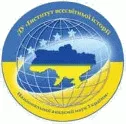The Role of the “One Belt, One Road” Initiative in the Transformation of the World Order
Main Article Content
Abstract
The article examines the problem of the development and implementation of “the One Belt, One Road” Initiative (OBOR), as well as its impact on the transformation of the contemporary international order. It is shown that the initiative created by China in 2013 called “the Silk Road Economic Belt” and “the Maritime Silk Road” of the XXI Century, and then renamed “the One Belt, One Road” Initiative, is one of the projects that will continue the path of dynamic development, turning China into a leading power in the world economy and politics in a tangible way perspective. The unprecedented economic progress over the past fifty years reflects the dynamism of the CPC leadership, starting with Deng Xiaoping and Xi Jinping. The transformation from a low-income agricultural economy to an economy that is dynamically developing and based on strategic foresight.
The holding of “the third Belt and Road Forum” on October 17-18, 2023 in Beijing reflected an innovative approach to maintaining China’s “great leap forward”. Xi Jinping outlined eight main steps to promote constructive cooperation, focusing on multidimensional networks, open economy, practical cooperation, green development, scientific innovation, people-to-people contacts, assessment systems and multilateral cooperation.
It has been proven that the “OBOR” initiative is, first of all, a reflection of China’s strategic vision to strengthen its influence in various parts of the world, especially in Asia and Africa, by providing assistance in infrastructure development and industrialization. The global infrastructure projects of the “OBOR” initiative are a prime example of China’s commitment to soft power and securing its investments to realize its short- and long-term interests.
It is shown that in the coming decades, humanity may witness a paradigm shift in the world order, centered around the “One Belt, One Road” initiative as China’s signature foreign policy. The goal of the One Belt, One Road” initiative is to achieve both an economic and a political vision. As China provides infrastructure investments and infrastructure development experience to the countries of the region, it will help the countries of the region to develop economically or share China’s economic prosperity. The success and viability of the “OBOR” initiative depends on China’s ability to continue to succeed through its Chinese model, its ability to protect a huge number of assets abroad, and the unique political preferences of countries in the region. Before China can master the power of its own ideas, China’s economic interests in the region will inevitably be protected and secured by its growing military might.
Downloads
Article Details

This work is licensed under a Creative Commons Attribution-NonCommercial 4.0 International License.
References
Andornino, G.B. (2017). The Belt and Road Initiative in China’s Emerging Grand Strategy of Connective Leadership. China & World Economy. Volume 25, Issue 5. P. 4-22. [Online]. Avaliable from: https://onlinelibrary.wiley.com/doi/10.1111/cwe.12211 [In English].
Wiig, V, Silver, J. Turbulent presents, precarious futures: urbanization and the deployment of global infrastructure. Regional Studies. Volume 53, Issue 6, 2019. P. 912-923. [Online]. Avaliable from: https://www.doi.org/10.1080/00343404.2019.1566703 [In English].
Miller, M.C. (2016). The role of beliefs in identifying rising powers. Chinese Journal of International Politics. Volume 9, Issue 2. P. 211-238. [Online]. Avaliable from: https://www.doi.org/10.1093/cjip/pow006 [In English].
Hurley, J., Morris, S., Portelance, G. (2017). Examining the debt implications of the Belt and Road Initiative from a policy perspective. Journal of Infrastructure, Policy and Developmen. Vol 3, Issue 1. P. 139-175. [Online]. Avaliable from: https://systems.enpress-publisher.com/index.php/jipd/article/view/1123/871 [In English].
Schulhof, V., Vuuren, V, Kirchherr, J. (2022). The Belt and Road Initiative (BRI): What Will it Look Like in the Future? Technological Forecasting and Social Chang. Volume 175, February. [Online]. Avaliable from: https://www.sciencedirect.com/science/article/pii/ S004016252100740X [In English].
Wang, Y. (2016). Offensive for defensive: the belt and road initiative and China’s new grand strategy. Pacific Review. Volume 29, Issue 3. P. 455-463. [In English].
Full text of President Xi’s speech at opening of Belt and Road forum. (2017). Work Together to Build the Silk Road Economic Belt and The 21st Century Maritime Silk Road. 14 May. [Online]. Avaliable from: https://www.mfa.gov.cn/mfa_eng/wjdt_665385/zyjh_665391/201705/ t20170527_678618.html [In English].
The Belt and Road Initiative: A Key Pillar of the Global Community of Shared Future The State Council Information Office of the People’s Republic of China. (2023). The Third Belt and Road Forum for International cooperation. October. [Online]. Avaliable from: http://www.beltandroadforum.org/english/n101/2023/1010/c124-895.html [In English].
García-Herrero, A. (2023).The Belt and Road Initiative transformation makes it a more – not less- useful tool for China. Brugel. 15 March. [Online]. Avaliable from: https://www.bruegel.org/newsletter/belt-and-road-initiative-transformation-makes-it-more-not-less-useful-tool-china [In English].
Ahmar, M. Will The Belt And Road Initiative Transform The World Order? (2023). Friday Times. October 19. [Online]. Avaliable from: https://thefridaytimes.com/19-Oct-2023/will-the-belt-and-road-initiative-transform-the-world-order [In English].
Pierson, D., Kurmanaev, A., May, T. (2023). With Putin by His Side, Xi Outlines His Vision of a New World Order. The New Tork Times. October 18. [Online]. Avaliable from: https://www.nytimes.com/2023/10/18/world/asia/putin-xi-china-russia.html [In English].
Kissinger, H. (2017). Henry Kissinger and Graham Allison on the U.S., China, and the Thucydides’s Trap at the Harvard Club of New York City. Dialogue with Graham Allison. Harvard Club of New York, July 11. [Online]. Avaliable from: https://www.belfercenter.org/thucydides-trap/book/book-events/kissinger-destined-war [In English].
Mackinder, H.J. (2004). The Geographical Pivot of History. The Geographical Journal Vol. 170, No. 4. Decmber. P. 298-321. [In English].
Xi, J. (2014). Speech at 4th Conference on Interaction and Confidence-Building Measures in Asia Summit. May 20-24. [Online]. Avaliable from: http://www.china.org.cn/world/node_ 7206254.htm [In English].
Megoran, N. Sharapova, S. (2015). Central Asia in International Relations: The Legacies of Halford Mackinder. Intelligence and National Security. Volume 30, Issue 4. P. 570-573. [Online]. Avaliable from: 10.1080/02684527.2013.875372 [In English].
Shirley, Yu. (2019). The Belt and Road Initiative: Modernity, Geopolitics and the Developing Global Order. Asian Affairs. 20 May. [Online]. Avaliable from: 10.1080/03068374.2019.1602389 [In English].
Felix, K. Chang. China’s Belt and Road Initiative: Politics Over Economics. Foreign Policy Research Institute. 19 September 2023. [Online]. Avaliable from: https://www.fpri.org/article/2023/09/chinas-belt-and-road-initiative-politics-over-economics/ [In English].

